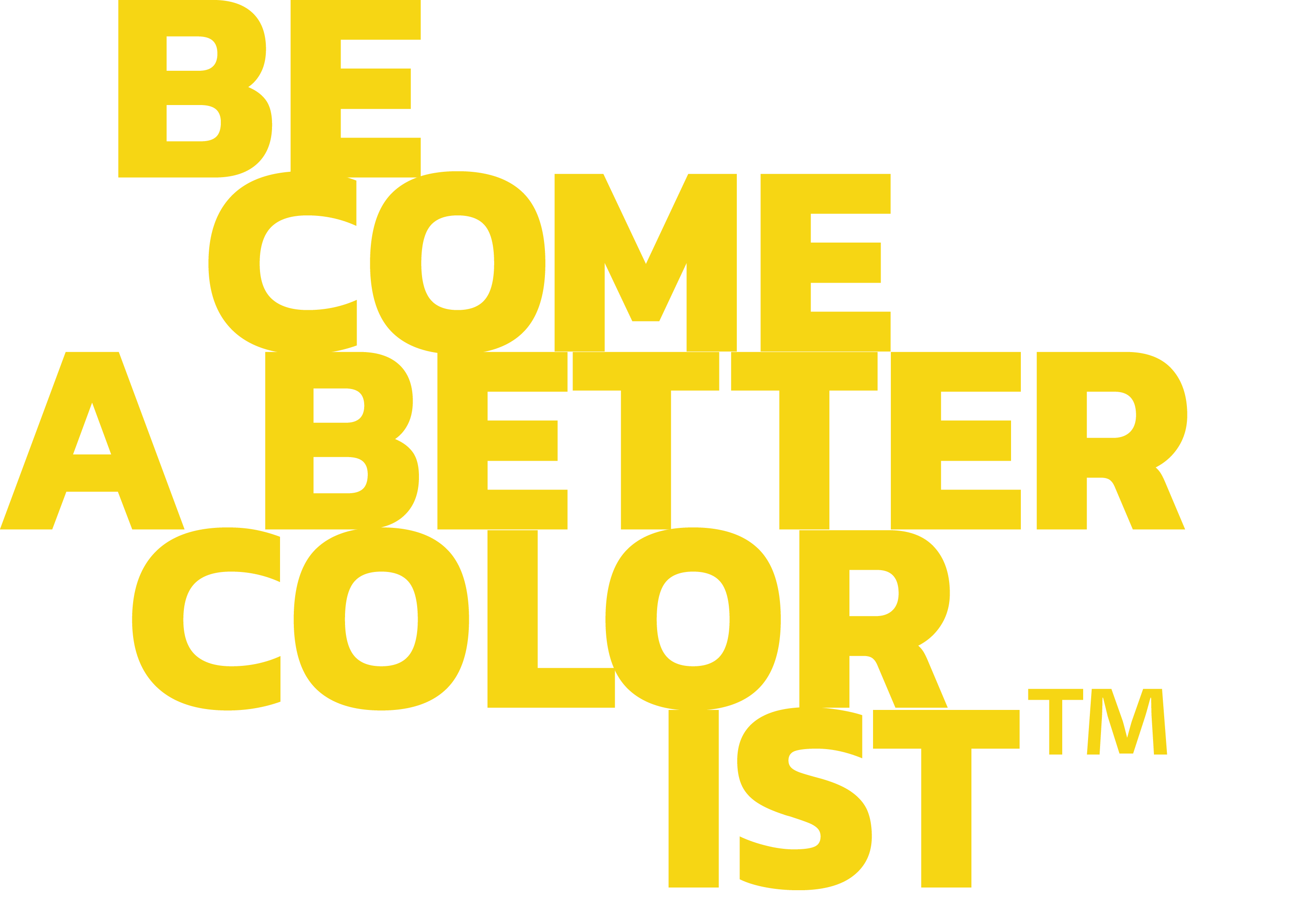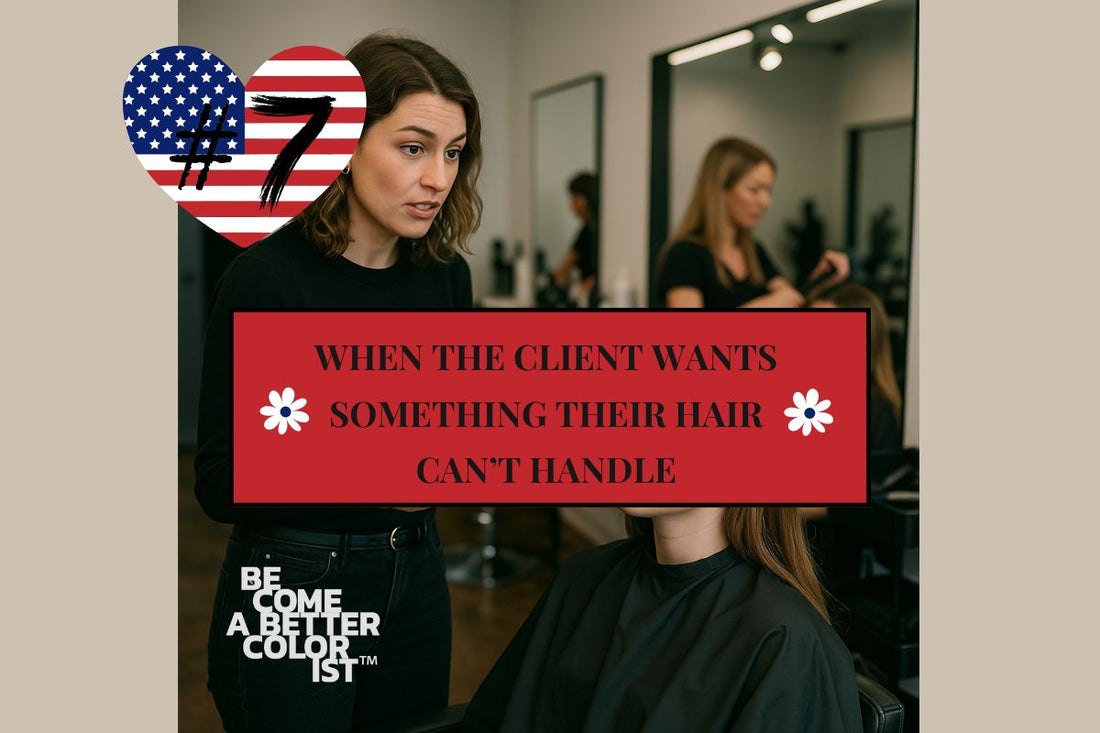🎧 Prefer to listen instead?
This blog post is also available as an audio blog.
👉 Click here to listen on Spotify: #7 When the Client Wants Something Their Hair Can’t Handle, As an audio blog on Spotify
To have the courage to guide – even when it means slowing things down
You’ve probably been there.
A new client sits in your chair, pulls out a photo from Instagram, and says:
“I want this.”
It’s an image of hair that’s several levels lighter than her natural color—maybe cooler, maybe warmer—but above all: much healthier than the hair she actually has.
And you start seeing the signs. Her hair has been bleached, colored, highlighted, straightened—maybe even permed. But the hair in the photo? That’s untouched. Captured in a studio, styled with professional care, perfect lighting—and likely a filter or two.
And there you are. Brush in hand. Expectations floating in the air.
When dreams meet reality
Coloring hair isn’t just about technique and chemistry.
It’s also about psychology and communication.
We’re not just managing pigments—we’re managing expectations.
When a client brings in an unrealistic goal, it’s not about saying no—it’s about helping her understand why a different approach may be necessary. Giving her the knowledge to see that the goal isn’t unreachable, but the path there may not be the one she had in mind.
That’s where real expertise begins to show.
Because it’s not about saying “no”—
It’s about explaining why a “yes” could be the wrong answer.
The hair you have vs. the hair you want
The biggest mistake we as hairdressers can make is jumping straight to the solution—before we’ve asked the right questions and made the right diagnosis.
And one of the most important questions we can ask early in the consultation is:
“What’s most important to you?”
Is it becoming lighter or achieving a cooler tone? Is it how you’ll be able to style your hair afterwards?
Or is it the result itself? The feeling? The time it takes? How long it lasts? Or what it’s allowed to cost?
The answer gives us a clear view of the client’s expectations—and what simply can’t be compromised. That insight shapes everything else.
One of the biggest reasons a client leaves disappointed isn’t that the color came out “wrong”—but that her expectations didn’t match what she got.
The stylist might think it turned out amazing—but the client had a completely different image in mind.
That doesn’t mean anyone did anything wrong. But it highlights just how important it is for both sides to have a shared vision before the treatment begins.
That’s why it’s our job to both listen and explain—so that our technical understanding and the client’s desires come together in one, agreed plan.
What can the hair actually handle?
Once we know what the client values most, we can ask the next key question:
What is the hair actually capable of?
There are many factors to consider:
-
Previous chemical treatments
-
Current condition (elasticity, porosity, strength)
-
Hair type and texture
-
Underlying pigment
-
Realistic timeline for change
-
The client’s commitment to aftercare
-
And how much the client is willing to invest
Does the client want to go icy blonde but has compromised, porous hair with lots of warm undertones? Then it’s not the color formula that determines the result—it’s the state of the hair.
Does she want to go from black to copper-red in a single session?
Then it’s not about the lightener—it’s about what the hair can withstand.
Does she want long-lasting results but never uses heat protection or conditioning products?
Then it’s not the color that’s failing—it’s the habits.
We’re the experts. We have to act like it.
We’re not here to follow—we’re here to guide.
But that takes courage.
Courage to say:
“That’s a gorgeous color—but I don’t think we can achieve that right now and keep your hair healthy.”
And it takes knowledge.
Because if we don’t understand why something isn’t possible, we won’t be able to explain it in a way the client understands.
Here are a few phrases that often work better than a straight-up “no”:
-
“We can absolutely get there, but in stages—and I want to be upfront about what’s involved.”
-
“For your hair to stay healthy, we need a result that’s both beautiful and sustainable.”
-
“I see what you like—and I think we can find a version that works better for your hair right now.”
It might sound obvious. But in practice, it’s easy to say what the client wants to hear—to avoid the tough conversation.
And sometimes, because we’re not entirely sure ourselves.
But if we compromise quality to avoid discomfort, we lose both the client’s trust—and our own professional pride.
The consultation is your most important service
Before any color is mixed, before a single section is parted—that’s when it’s decided whether the client will walk out satisfied or disappointed.
A great consultation isn’t about impressing anyone.
It’s about listening, asking, and aligning expectations.
Some helpful questions:
-
Have you had similar colors before?
-
How often are you willing to come in for upkeep?
-
How much time do you spend on your hair at home?
-
Do you have any photos of when you felt your hair looked its best?
With those answers, you get more than a visual goal.
You understand what’s realistic and sustainable in her daily life.
Because a color the client loves in the salon—but can’t maintain—will soon feel like a failure.
You can’t be responsible for the hair—unless you lead the process
If a client is pushing you to go further than you’re comfortable with, it’s more than okay to say:
“I’d love to help you—but not if it means compromising your hair.”
That’s not harsh. That’s professional.
You’re not just there to apply color. You’re there to protect the hair—and stand by your standards.
And this matters more than ever, in a world where clients are constantly shown hair that’s curated, filtered, and far from real life.
What looks like a soft, natural blonde online could actually be the result of three sessions, a custom formula, light editing—and a whole team behind it.
It’s your job to translate that image into a reality—with all the necessary conditions attached.
It doesn’t start with the product. It starts with you.
You can have the best color lines. The gentlest bleach. The sharpest tools. The smartest formulas.
And yes—it’s easier to succeed with good products.
But a product is never better than your understanding of how—and why—to use it.
There’s no magic in a tube. There’s chemistry.
And behind every result is a need for clarity:
What is this product actually doing? How does it interact with the hair? What’s realistic? What’s not?
In the end, it’s not the product that carries the responsibility. It’s you.
And if you can’t draw the line when the client’s expectations don’t match reality—then none of it matters.
You’re not just there to deliver a result.
You’re there to advise. To protect. To lead.
And sometimes, that means saying:
“We’re not quite there yet, but we can create a plan that works—for you and your hair.”
More than color – It’s about professional pride
Coloring hair is more than achieving a result. It’s about understanding the person behind the goal, the hair behind the photo—and the chemistry behind every decision.
Your products matter. Your craftsmanship matters.
But what truly makes the difference is your ability to see the full picture, communicate clearly, and guide your client toward something that both looks and feels right.
Because in the end, it’s not just about color.
It’s about trust. Knowledge. And the courage to stand up for what you know is right.
We’re not quite there yet, but we can create a plan that works—for you and your hair.
And that’s where the true value of your profession lies.
When we stand behind our knowledge, communicate with honesty, and prioritize the hair’s condition—we don’t just create better results.
We create professional pride.
And maybe even more importantly:
We begin to shift the mindset of our industry—one color-treated head at a time.
Expectations can color a service. But only knowledge can color it right.
/Camilla Rörstrand

